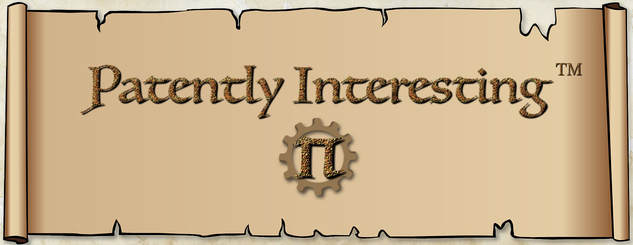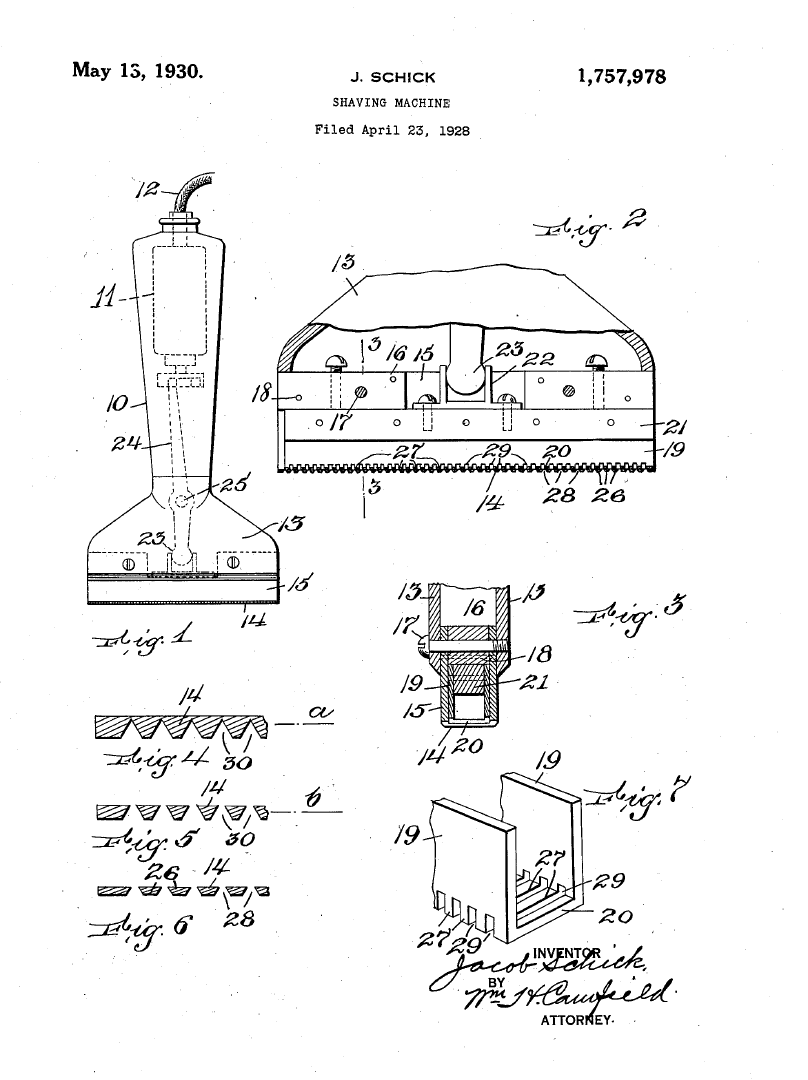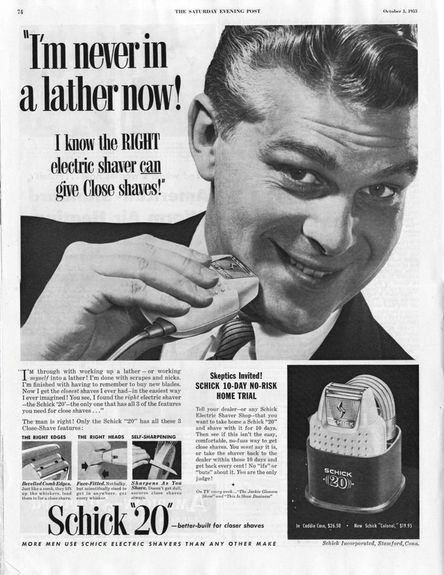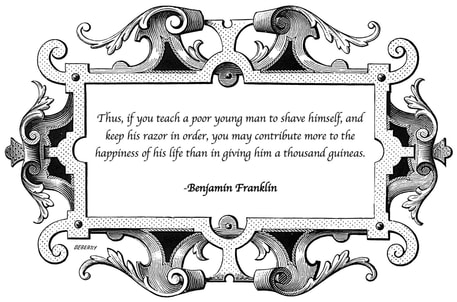
On May 13 of the year 1930, U.S. Patent No.: 1,757,978 issued to Jacob Schick for a "Shaving Machine". This patent is often cited as being the first patent for an electric razor, which is incorrect. The first patent for an electric razor was U.S. Patent No.: 616,554, which issued way back in 1898 to John Francis O'Rourke, a New York civil engineer. In fact, Schick's '978 patent wasn't even Schick's first patent for an electric razor. However, the '978 patent did cover the first commercially successful electric razor.
Schick joined the U.S. Army in 1898 and was stationed in the Phillipines, where he contracted a severe case of dysentary. His illness forced him to return to the U.S. to convalesce, which took more than a year. Once Schick was able travel again, his doctor suggested that he move to a colder climate to improve his health. Following his doctor's suggestion, Schick transferred to Fort Gibbon in Alaska to join the 22nd Infantry. The cold weather agreed with Schick, whose health improved markedly, thereby permitting him to become instrumental in installing more than a thousand miles of telegraph lines through rugged Alaskan terrain.
While in Alaska, Schick apparently caught a case of gold fever because he retired from the Army in 1910 to engage in gold prospecting. On one of his prospecting excursions, Schick injured his ankle and was forced to stay in camp to recover. During his convalescence, Schick came to dislike shaving in the bitter cold with water and decided to do something about it. He began to develop a shaver that would work without water, i.e., a dry shaver. His initial design was for a dry electric shaver that had a shaving head connected by an elongated cable to a separate motor, with the cable transmitting motion from the motor to the shaving head. Schick submitted his design to several manufacturers, who promptly rejected it.
Schick's plans to commercialize his dry electric razor were interrupted by World War I when he returned to active duty in the Army. When the war was over, Schick was determined to again pursue his idea, but he needed to raise capital, so he turned to inventing other devices. He invented several pencil knives and sharpeners for Miller Reese Hutchison, who owned an office supply company and was himself a noted inventor. Schick also invented a cartridge type of safety razor (the forerunner of the modern injector razor), which was inspired by the ammunition clips of repeating rifles. He obtained several patents on these cartridge safety razors and formed the Magazine Repeating Razor Company to produce them. The cartridge safety razors were commercially successful, but Schick was certain that the future of shaving was the electric razor. Driven by this belief, Schick sold the Magazine Repeating Razor Company and used the proceeds to pursue commercialization of his dry electric razor.
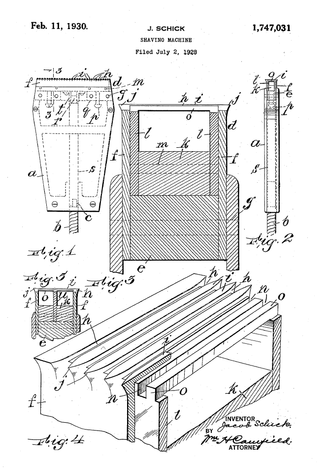 U.S. Patent No.: 1,747,031
U.S. Patent No.: 1,747,031
In his initial commercialization attempt, Schick relied on his original design for the dry electric razor, i.e., a shaving head connected by an elongated cable to a separate motor. He even applied for and received a patent for an electric razor with this construction, namely U.S. Patent No.: 1,747,031, which issued on February 11, 1930. This design, however, only met with limited commercial success due to its unwieldiness.
In 1930, Schick incorporated his venture as the Schick Dry Shaver, Inc. He also concentrated on a new model of his dry electric razor, which incorporated the motor into a body that also housed the shaving head. In addition, the shaving head of the new model was modified to provide a closer shave. This was achieved by making an outer, skin-contacting plate of the shaving head very thin. The general construction of the modified shaving head, however, was the same as the one used in the original model of the dry electric shaver, which was was shown in the first '031 patent.
Generally, the shaving head of both the original model and the new model included the outer, skin-contacting plate (or shear plate), which had a series of slots formed therein, and an inner, channel-shapped cutter having a bottom wall with slots that formed a series of cutting teeth. The bottom wall of the cutter adjoined an inner surface of the shear plate and was moved back and forth by the motor to cut hairs that extended through the slots of the shear plate.
The '978 patent covered the new model of Schick's dry electric razor. Interestingly, although the '978 patent showed the motor inside the same housing as the shaving head, none of the claims of the '978 patent were directed to this feature. All of the claims of the '978 patent were directed to features of the shaving head, which only differed slightly from those shown in the earlier '031 patent.
The new model of Schick's dry electric shaver was commercially very successful. In fact, it was so succesful that Schick became concerned about sheltering his money from taxes. In order to do so, he transferred his wealth to holding companies in the Bahamas. When the government started investigating the transfer, Schick emigrated to Canada, where he died of kidney failure in 1937.
In 1930, Schick incorporated his venture as the Schick Dry Shaver, Inc. He also concentrated on a new model of his dry electric razor, which incorporated the motor into a body that also housed the shaving head. In addition, the shaving head of the new model was modified to provide a closer shave. This was achieved by making an outer, skin-contacting plate of the shaving head very thin. The general construction of the modified shaving head, however, was the same as the one used in the original model of the dry electric shaver, which was was shown in the first '031 patent.
Generally, the shaving head of both the original model and the new model included the outer, skin-contacting plate (or shear plate), which had a series of slots formed therein, and an inner, channel-shapped cutter having a bottom wall with slots that formed a series of cutting teeth. The bottom wall of the cutter adjoined an inner surface of the shear plate and was moved back and forth by the motor to cut hairs that extended through the slots of the shear plate.
The '978 patent covered the new model of Schick's dry electric razor. Interestingly, although the '978 patent showed the motor inside the same housing as the shaving head, none of the claims of the '978 patent were directed to this feature. All of the claims of the '978 patent were directed to features of the shaving head, which only differed slightly from those shown in the earlier '031 patent.
The new model of Schick's dry electric shaver was commercially very successful. In fact, it was so succesful that Schick became concerned about sheltering his money from taxes. In order to do so, he transferred his wealth to holding companies in the Bahamas. When the government started investigating the transfer, Schick emigrated to Canada, where he died of kidney failure in 1937.

